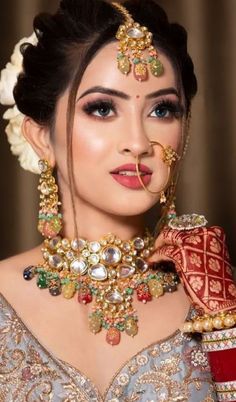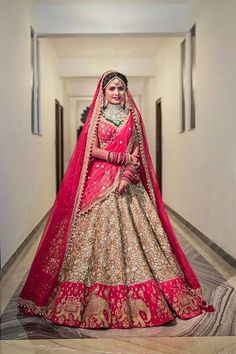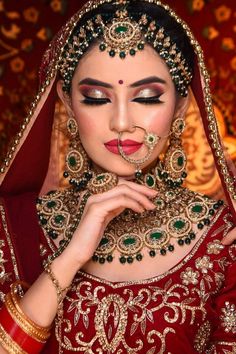North Indian Hindu Bridal
The wedding ceremony in North Indian Hindu culture is a vibrant tapestry of tradition, spirituality, and celebration. From elaborate rituals and sacred ceremonies to opulent attire and intricate adornments, every aspect of the North Indian Hindu bridal journey is steeped in history and symbolism. In this class note, we will embark on a journey through the enchanting world of North Indian Hindu bridal customs, exploring the richness of traditions, the elegance of attire, and the significance of rituals.

Pre-Wedding Rituals:
- Roka Ceremony: The journey of a North Indian Hindu bride typically commences with the Roka ceremony, where the families of the bride and groom formally agree to the union. It is an auspicious occasion marked by the exchange of gifts, blessings, and prayers for the couple’s future happiness and prosperity.
- Mehendi Ceremony: The Mehendi ceremony is a festive pre-wedding ritual where intricate designs are applied to the bride’s hands and feet with henna paste. It is a celebration of beauty, femininity, and joy, with family and friends coming together to sing, dance, and share in the excitement of the upcoming wedding.
- Haldi Ceremony: The Haldi ceremony, also known as the Pithi ceremony, is a traditional pre-wedding ritual where turmeric paste is applied to the bride’s and groom’s bodies to cleanse, purify, and beautify their skin. It is believed to ward off evil spirits, bless the couple with good fortune, and prepare them for the wedding festivities ahead.
Wedding Attire:

- Bridal Lehenga: The quintessential bridal attire for North Indian Hindu brides is the bridal lehenga, a long skirt paired with a matching blouse and dupatta (scarf). The lehenga is adorned with intricate embroidery, zari work, and embellishments such as sequins, beads, and stones, creating a stunning and regal look for the bride.
- Jewelry: North Indian Hindu brides accessorize their bridal attire with exquisite jewelry, including gold necklaces, earrings, bangles, and nose rings. The jewelry is often passed down through generations and holds sentimental value, symbolizing love, prosperity, and family heritage.
- Dupatta: The dupatta or scarf is an essential part of the bridal ensemble, draped over the head or shoulders to complete the look. It is often embellished with embroidery, lace, or tassels, adding a touch of elegance and grace to the bride’s attire.
Wedding Rituals:
- Ganesh Puja: The wedding ceremony typically begins with a Ganesh Puja, where prayers are offered to Lord Ganesh, the remover of obstacles and the god of new beginnings. It is believed to invoke blessings for a successful and auspicious wedding ceremony.
- Kanyadaan: The Kanyadaan ceremony is the giving away of the bride by her parents to the groom, symbolizing the transfer of responsibility and care from one family to another. It is a poignant moment filled with blessings, prayers, and emotional exchanges, marking the beginning of a new chapter in the bride’s life.
- Saptapadi (Seven Steps): The Saptapadi or Seven Steps is a sacred ritual where the bride and groom take seven symbolic steps together, representing their journey through life as partners and companions. With each step, they make vows and promises to each other, affirming their commitment, love, and mutual respect.

Post-Wedding Traditions:
- Vidaai Ceremony: The Vidaai ceremony is an emotional moment where the bride bids farewell to her family and leaves her parental home to start a new life with her husband. It is a tearful yet joyous occasion filled with blessings, prayers, and well-wishes for the bride’s happiness and prosperity in her new home.
- Grihapravesh: After the wedding ceremony, the bride is welcomed into her new home in a ritual known as Grihapravesh. She enters the house with her right foot, symbolizing prosperity and good fortune, and is greeted with blessings, gifts, and warm hospitality from her new family members.
Conclusion: The North Indian Hindu bridal journey is a celebration of love, tradition, and cultural heritage, woven with rituals, attire, and customs that have been passed down through generations. From the vibrant colors of the bridal lehenga to the solemnity of the Kanyadaan ceremony, each aspect of the wedding celebration is imbued with meaning, symbolism, and tradition. Through this class note, we have explored the enchanting world of North Indian Hindu bridal customs, celebrating the beauty, elegance, and richness of this cherished cultural heritage.

